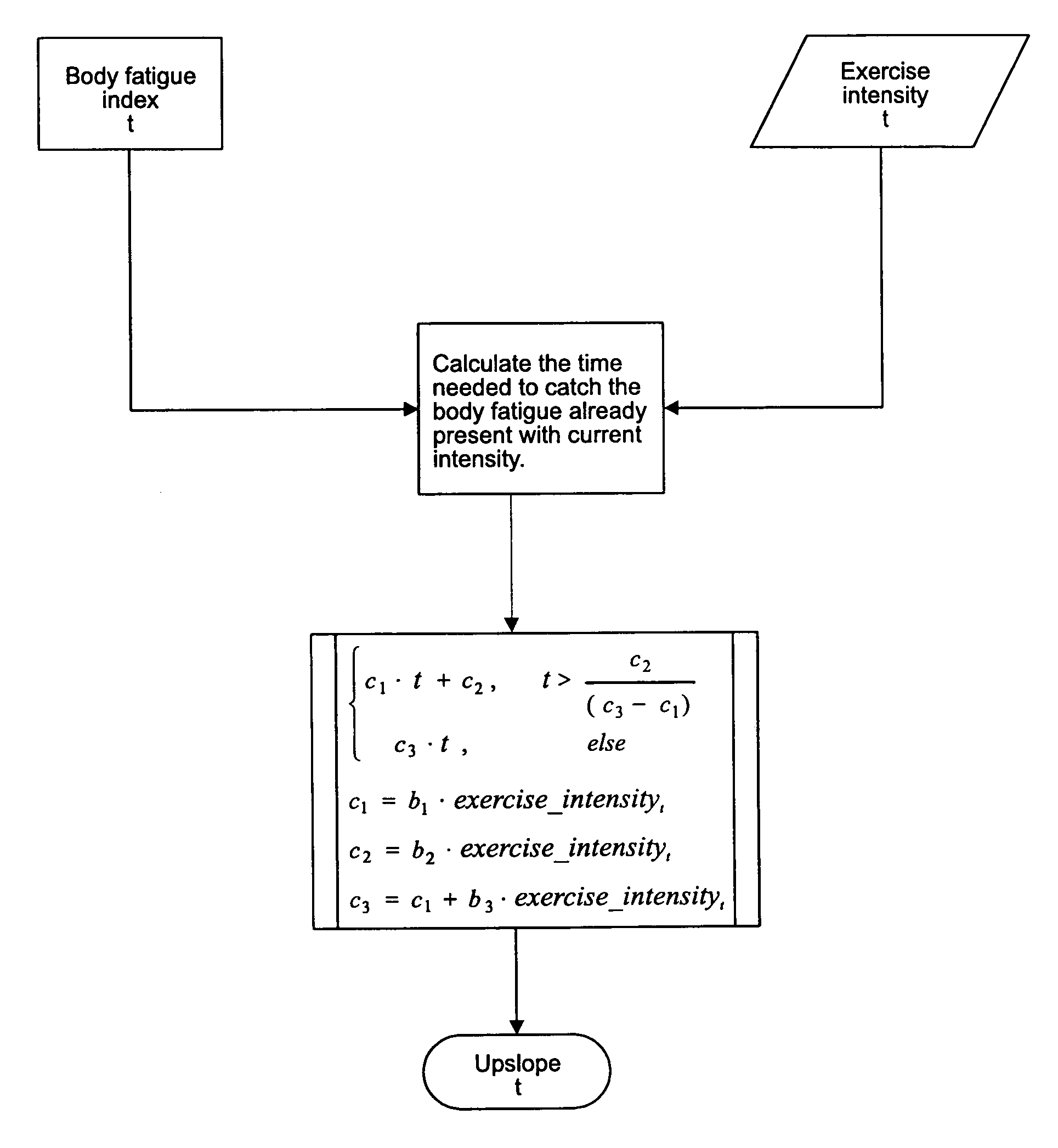Method for monitoring accumulated body fatigue for determining recovery during exercise or activity
a body fatigue and recovery technology, applied in the field of body functions, can solve the problems of difficult to achieve the goal of a person engaged in physical exercise and training, heavy measuring equipment, and negative training
- Summary
- Abstract
- Description
- Claims
- Application Information
AI Technical Summary
Benefits of technology
Problems solved by technology
Method used
Image
Examples
Embodiment Construction
[0040]The innovation is described here with the aid of an example implementation. It should be noted that the described system is not bound to any specific model or specifications, but rather, different alterations, forms, and improvements are possible and are in line with the spirit of the innovation. Thus, the following merely contains a description of the preferred embodiments of the innovation.
[0041]The preferred embodiment applies oxygen consumption as the input physiological measure. Given the relative difficulty in measuring oxygen consumption directly, the level of VO2 is estimated on the basis of heart beat, for example, by applying a polynomial equation or a more complex function relating heart beat level to the level of VO2. However, it is important to notice that whereas the VO2 is used here to index exercise intensity, also other measures, such as heart beat level, respiratory interval and ventilation, skin temperature, energy consumption, and movement and acceleration,...
PUM
 Login to View More
Login to View More Abstract
Description
Claims
Application Information
 Login to View More
Login to View More - R&D
- Intellectual Property
- Life Sciences
- Materials
- Tech Scout
- Unparalleled Data Quality
- Higher Quality Content
- 60% Fewer Hallucinations
Browse by: Latest US Patents, China's latest patents, Technical Efficacy Thesaurus, Application Domain, Technology Topic, Popular Technical Reports.
© 2025 PatSnap. All rights reserved.Legal|Privacy policy|Modern Slavery Act Transparency Statement|Sitemap|About US| Contact US: help@patsnap.com



